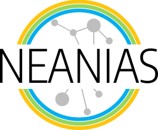Field studies and data collection are vital for mapping and understanding the active geological processes on Earth, particularly for those that induced superficial deformations like earthquakes and shallow magmatic processes (e.g. Bonali et al., 2012; Tibaldi et al., 2017).
However, field studies and direct observations are very often limited by specific field-related conditions such as the inaccessibility of key outcrops due to their location in remote or dangerous areas (e.g. Tibaldi et al., 2008). The Structure from Motion and Multiview stereo (SfM-MVS) photogrammetry techniques, where photos are collected using Unmanned Aerial Vehicles (UAVs), are nowadays widely used in Earth and Environmental Sciences to overcome these problems providing high-resolution 3D Digital Outcrop Models (DOMs), digital surface models (DSMs) and Orthomosaics as results (e.g. Bonali et al., 2019a; Fallati et al., 2019). Most people dealing with geological and geohazard studies use different types of UAVs: balloons, multi-rotor, fixedwing and hybrid. Whereas balloons do not need fuel or battery, on the other hand they cannot be remotely controlled. Hybrid types allow to switch between flying like a fixed-wing aircraft and hovering like a multi-rotor one. The fixed-wing type can cover larger areas in a smaller time frame using high quality cameras, but such model is more difficult to be transported and more expensive than multi-rotor UAVs. Based on our experience, the latter can fly at very low heights attaining a great field resolution, and much more importantly, take-off and landing operations are easier than for fixed-wing models; this is crucial especially in difficult logistic terrains (e.g. outcropping lavas, Bonali et al., 2019a).
The challenge is to test the use of the so called “selfie drones” - quadcopter type - to produce very high-detailed 3D DOMs of relevant outcrops for geological mapping, data collection and scientific dissemination. As case studies we selected two sites within the Santorini volcanic complex (with different characteristics: i) the 1570-1573 AD volcanic crater in Nea Kameni island and ii) an outstanding vertical outcrop showing volcanic layered deposits, along the Vlychada Beach, southern Santorini.
